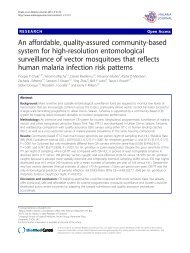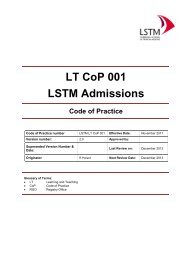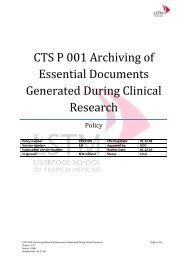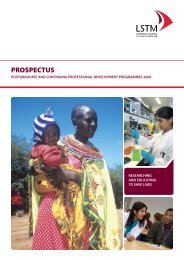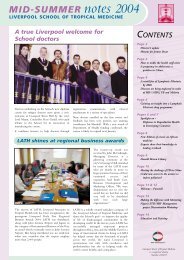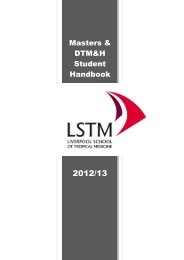Gender influences on child survival, health and nutrition: a ... - Unicef
Gender influences on child survival, health and nutrition: a ... - Unicef
Gender influences on child survival, health and nutrition: a ... - Unicef
Create successful ePaper yourself
Turn your PDF publications into a flip-book with our unique Google optimized e-Paper software.
<str<strong>on</strong>g>Gender</str<strong>on</strong>g> Influences On Child Survival, Health And Nutriti<strong>on</strong>: A Narrative Review<br />
these c<strong>on</strong>texts, where data has been collected <strong>on</strong> <strong>child</strong> anthropometry <strong>and</strong> domestic violence in<br />
over 30 low income countries;<br />
‣ There is inc<strong>on</strong>sistent measurement of domestic violence stemming from the use of diverse<br />
instruments <strong>and</strong> variables;<br />
‣ There is inc<strong>on</strong>sistency in research <strong>on</strong> <strong>child</strong>ren exposed to domestic violence in terms of the<br />
focus <strong>on</strong> older or mixed age groups of <strong>child</strong>ren <strong>and</strong> in terms of the attenti<strong>on</strong> paid <strong>on</strong>ly to a few<br />
outcomes or pathways as yet. The use of DHS data could help here too, to provide closer<br />
c<strong>on</strong>sistency between measurements, outcomes <strong>and</strong> pathways.<br />
Another recent study <strong>on</strong> domestic violence not included in the review (but which provides another<br />
important insight into this issue) has used nati<strong>on</strong>ally representative data from India to estimate the risks<br />
for infant <strong>and</strong> <strong>child</strong> mortality based not <strong>on</strong>ly <strong>on</strong> their exposure to domestic violence (the study uses the<br />
term intimate partner violence) but also <strong>on</strong> their gender (Silverman et al. 2011). The study found that<br />
not <strong>on</strong>ly were infants <strong>and</strong> young <strong>child</strong>ren at a greater risk of mortality in families where women<br />
experienced spousal violence, but that this risk was much greater for girls than boys. Even when<br />
c<strong>on</strong>trolling for the lower female birth rate, girls’ deaths accounted for 75% of all deaths related to<br />
intimate-partner violence. The authors offer a number of hypotheses to explain this shocking statistic,<br />
for example, that in c<strong>on</strong>texts where there is str<strong>on</strong>g gender bias (such as those discussed above) violence<br />
against wives may accompany a host of other forms of maltreatment of female members of the<br />
household, ranging from neglect in feeding or clothing, to the extreme of female infanticide. They also<br />
suggest that women who experience such violence may be less able to care for their <strong>child</strong>ren, especially<br />
in the circumstances in which they have given birth to a girl, where violence <strong>and</strong> abuse is likely to<br />
increase due to such gender bias (ibid.).<br />
REVIEW OF STUDIES<br />
Box 10 Underst<strong>and</strong>ing the roots of domestic violence<br />
Qualitative research can c<strong>on</strong>tribute to more in depth underst<strong>and</strong>ing about violence within<br />
households. For example four qualitative studies have explored the nexus of gender<br />
discriminati<strong>on</strong> <strong>and</strong> malnutriti<strong>on</strong>, affecting young married women in South Asia <strong>and</strong> impacting <strong>on</strong><br />
the birth weight of their <strong>child</strong>ren. The studies dem<strong>on</strong>strate that violence against young married<br />
women reflects specific gender norms which allow violence as acceptable in order to resolve<br />
c<strong>on</strong>flict, or as punishment for perceived mistakes (Sethuraman & Duvvury 2007). One of the<br />
studies shows that such gender norms are not uniform or static but vary between households<br />
which are more stringent in their expectati<strong>on</strong>s of young women <strong>and</strong> those which are more<br />
flexible. Women are more likely to experience violence when they are perceived to have failed in<br />
households with more rigid norms, while in those with more flexible norms they are more likely<br />
to receive support <strong>and</strong> mentoring in the early stages of marriage (Kapadia-Kundu et al. 2007).<br />
48



